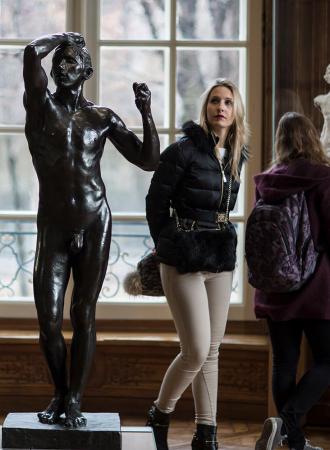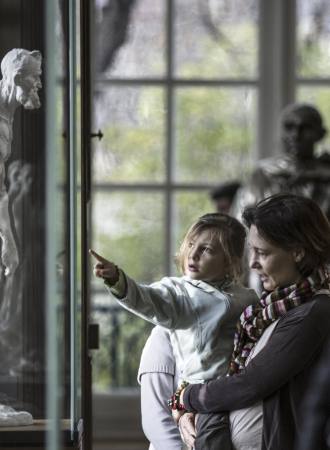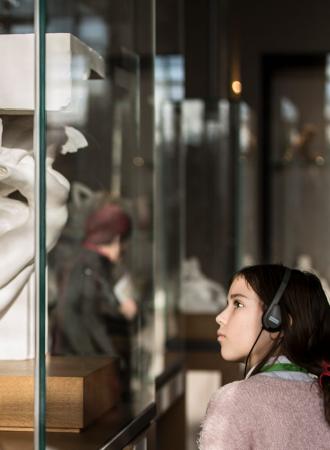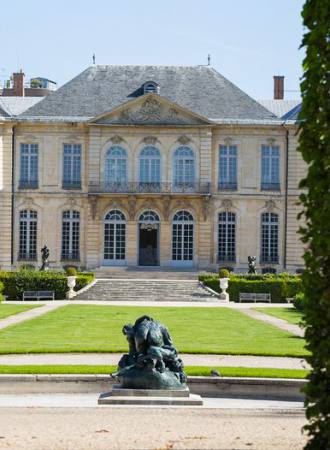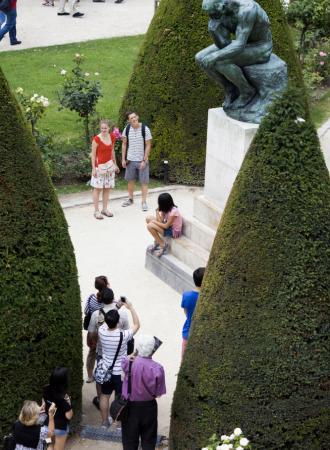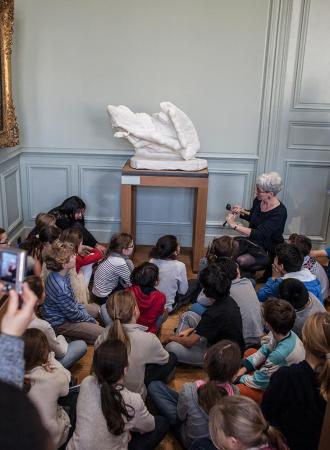Search the site
Corps et décors
The Body as ornament
Relating to the decorative arts and ornamental sculpture, Corps et décors ("The body as ornament") sheds new light on a little-known aspect of Rodin's work. Most of the 150 vases, objets d'art, drawings and decorative sculptures making up the exhibition are on public display for the first time. The exhibition also re-examines some of Rodin's best-known works – such as The Gates of Hell – in light of his decorative output. Corps et décors explores the value and status of the decorative arts – a key issue in the contemporary art world, and a lively topic of artistic debate in Rodin's own time, at the end of the 19th century.
Rodin's early career as an ornamental sculptor is too often overlooked. Trained at the Petite École de dessin et d’architecture, Rodin worked in the studio of Albert-Ernest Carrier-Belleuse at the beginning of the 1870s, and contributed to several schemes of ornamental sculpture from the Théâtre des Gobelins to Paris's Trocadéro fountains, and the Brussels Stock Exchange. Several sheets of studies, decorative busts and elements of ornamental sculpture included in the exhibition date from this period. In 1879, Rodin joined the Manufacture de Sèvres, where he produced numerous vases decorated with bacchantes, fauns and putti: Corps et décors presents the largest group of these works to be assembled since 1907, including two Shanghai vases recently acquired by the musée Rodin.
The Gates of Hell, Rodin's unfinished masterpiece, and an inexhaustible storehouse of figures, was created in response to a public commission: the work was initially destined for the façade of a planned State museum of the decorative arts. Other commissions followed, from patrons such as Baron Vitta or the industrialist Maurice Fenaille, eager to incorporate Rodin's art into their everyday surroundings. At the same time, works such as The Kiss or Eternal Springtime were issued in mass-produced scale versions, in response to demand from the public at large. For Rodin, the 1880s were a period of rich cross-fertilization and convergence between these differing areas of his work. Later, Rodin experimented with new materials and alterations of scale, constantly reworking his own creations.
As the exhibition's curator, François Blanchetière, puts it: "Ornamentation is not a crime!" Corps et décors examines Rodin's place in the world of the decorative arts and ornamental sculpture, at a time of increasing exchange and dialogue between traditionally compartmentalized spheres of artistic activity. The works on show highlight a number of issues at the core of artistic debate in the late 19th century: the unity of the arts, the outdistancing of historic styles, the decorative value of works of art, the rules and conditions governing the creation of ornamental sculpture, the dissemination of high art to the wider public. During the course of the exhibition, visitors are encouraged to relive this vital debate, to which Rodin contributed, albeit indrectly, through his life and work.
As a pendant to the exhibition, and as part of the musée Rodin's ongoing programme of contemporary art, the museum will present Torre, a monumental work by Wim Delvoye, together with a display of selected sculptures inside the Hôtel Biron. Delvoye's work revisits every conceivable genre: his often unlikely juxtapositions challenge our conceptions of good taste and excess in the decorative arts.
CURATORS
Dominique Viéville, Musée Rodin Director
François Blanchetière
Exhibition(s) location(s)
Musée Rodin
77, rue de Varenne, 75007, Paris
Dates
From April 16 to August 22, 2010
